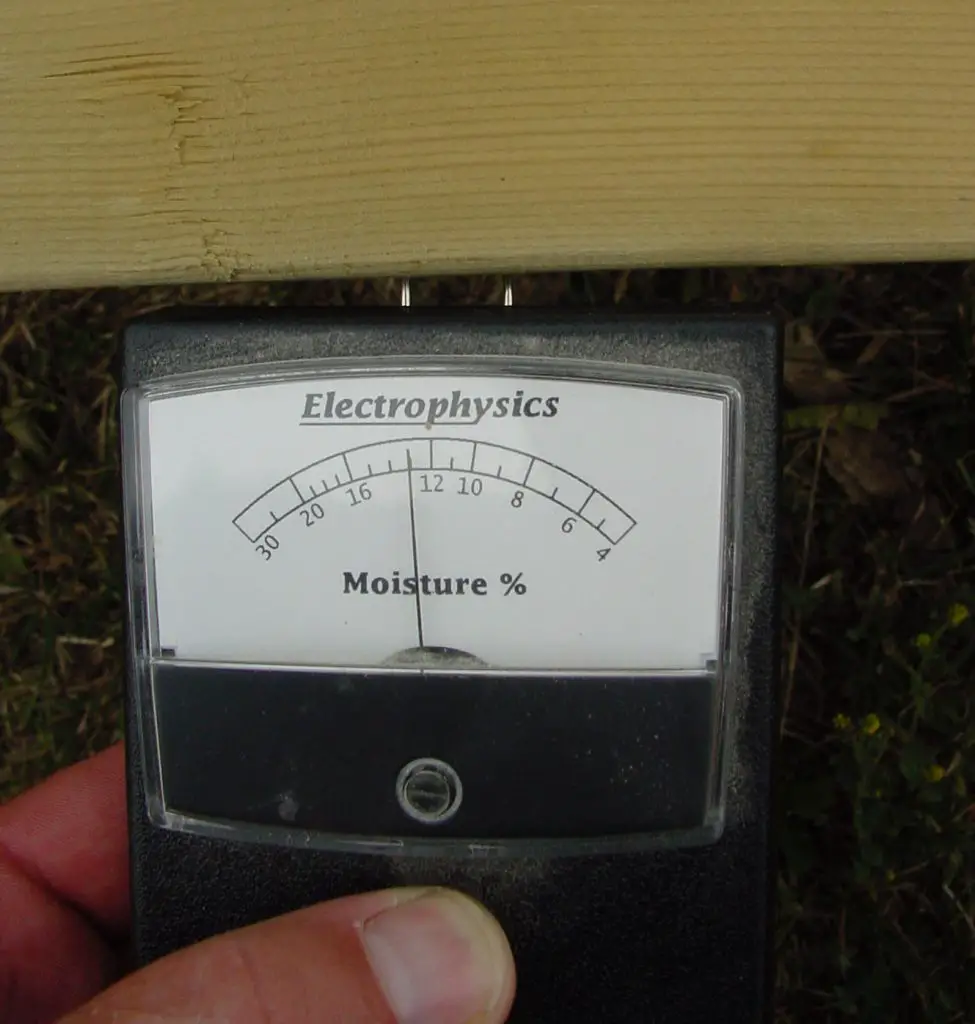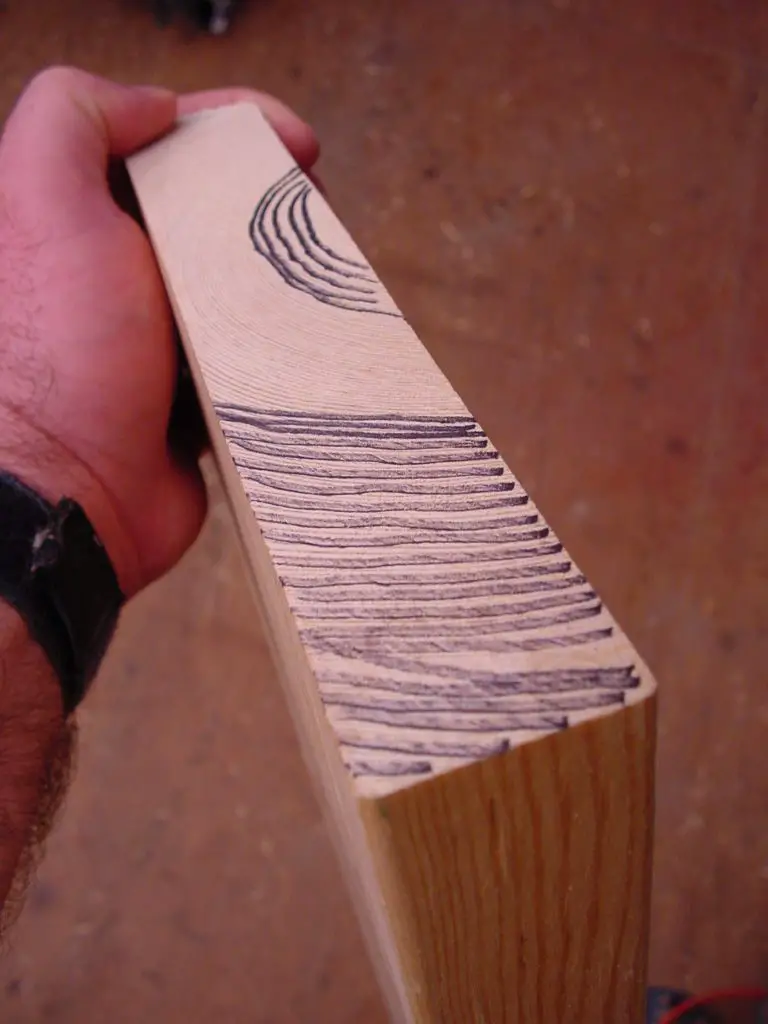
- Reading Time = 3 minutes
The Problem With Wide Boards
Sometimes wide wood is okay to use as-is, and sometimes it’s not. The issue hinges on growth ring patterns and orientation in the board, moisture content, and the particular application at-hand. The midsection of a board is especially volatile if it contains what’s called “pith”. That’s the very center of the tree. This area is always quite an unstable area – a problem that declines the more you move from that area. Sawing and re-gluing wide boards into smaller strips (without pith) is certainly safe, but it’s also boring. There’s something to be said for the story told by a 14 inch wide plank in the middle of a table. It’s precious. Here’s what I do when I want to use wide boards, especially in prominent locations in a finished project.

Detail#1: Moisture content. Dry wood with a moisture content 7% to 9% is ideal. Making this happen means storing what might seem like dry in a heated, indoor space for at least three weeks before construction, ideally during winter when moisture content in the air is lowest.

Detail#2: Growth ring orientation. Wood is most stable when growth rings as nearly square to the board face as possible. This is called quartersawn or vertical grain growth ring orientation, and it minimizes the kind of seasonal wood movement that can cause trouble.

Detail#3: Allow for seasonal wood movement. All wood expands when it gets humid, and contracts when it gets dry. This is true whether you use wide boards or not, and in some cases you need to make design allowances for movement. In the case of a tabletop, this means securing the wood to the support rails with metal clips designed for this job, or using screws driven through oversized holes bored through the table framework.
I follow these three details when I want to use wide boards in my projects, and things always work out well. No need to slice up that 14″-wide pine plank as long as you get moisture content, growth ring orientation correct, and the design of your project allows for seasonal movement.
 Did you find this article useful? I hope so. Please consider helping me cover the cost of creating and publishing content like this. Click the “buy me a coffee” button below for a fast, safe and simple way to make a contribution. Thank you very much for helping to keep this website up and running.
Did you find this article useful? I hope so. Please consider helping me cover the cost of creating and publishing content like this. Click the “buy me a coffee” button below for a fast, safe and simple way to make a contribution. Thank you very much for helping to keep this website up and running.
– Steve Maxwell


